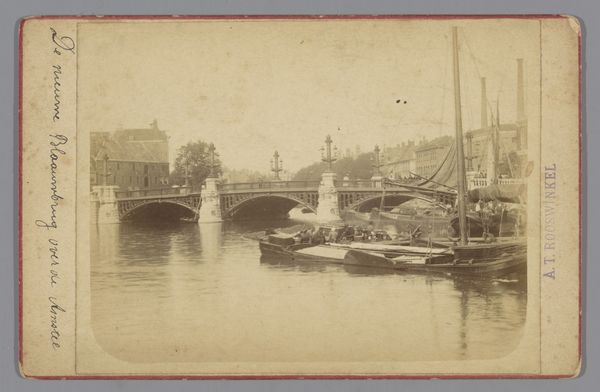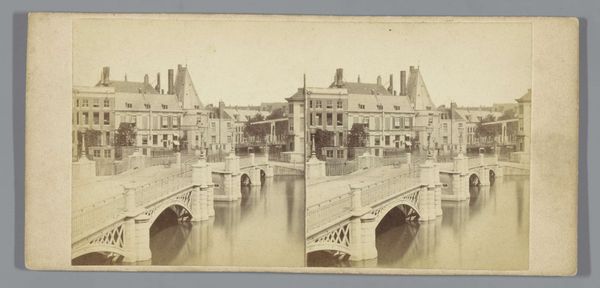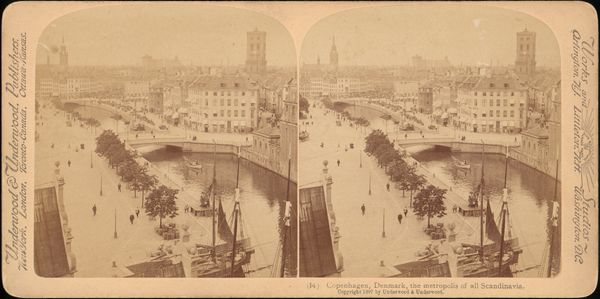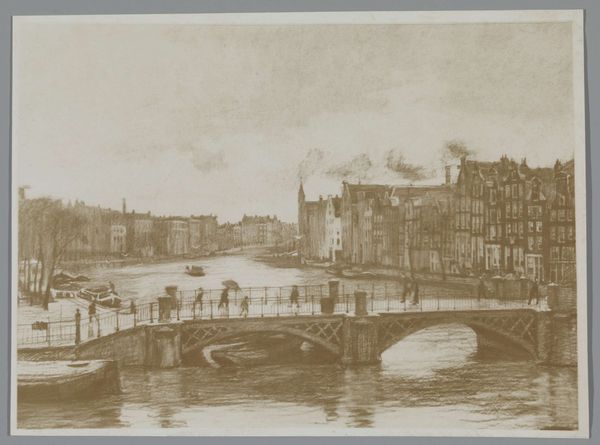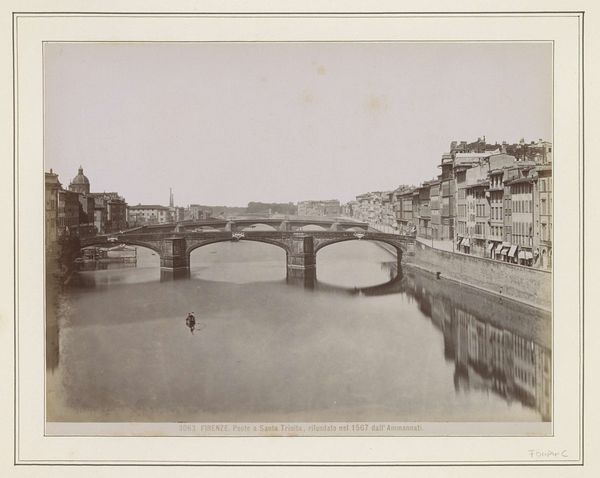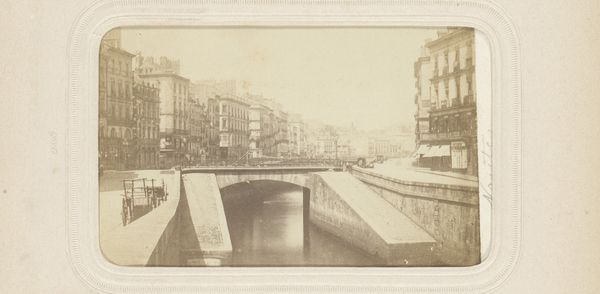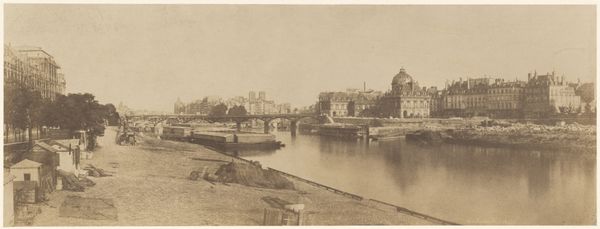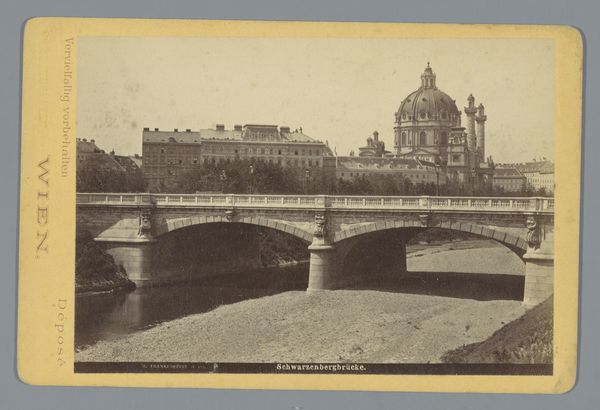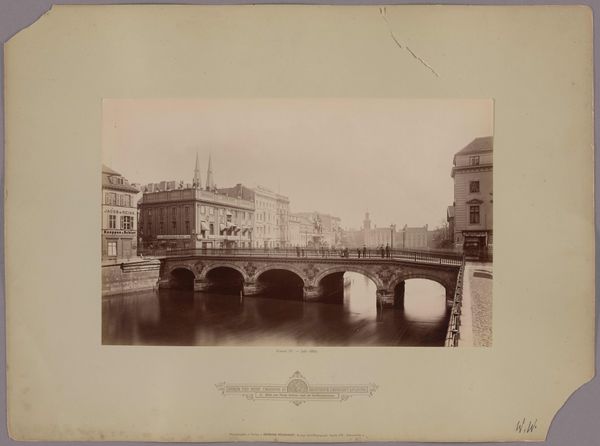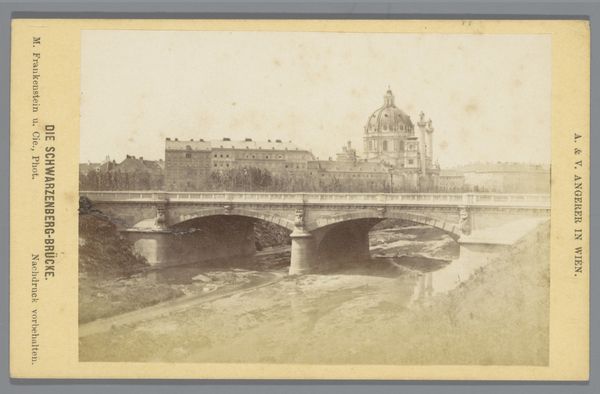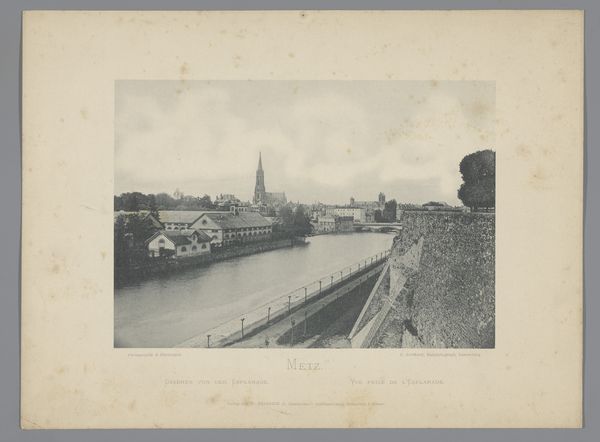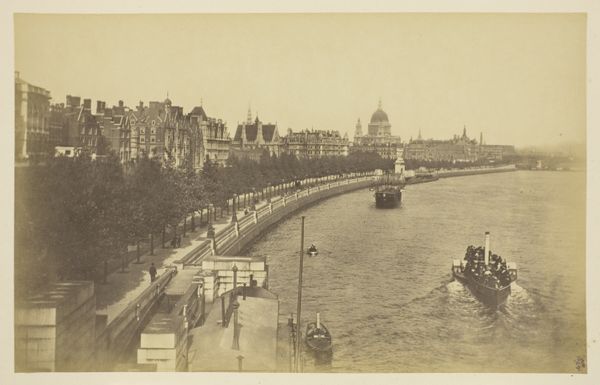
Dimensions: height 108 mm, width 165 mm
Copyright: Rijks Museum: Open Domain
Curator: Immediately, I see tranquility. There’s a stillness to this image, almost dreamlike with the sepia tones and soft focus. Editor: We are looking at Pieter Oosterhuis’ "Halvemaansbrug in Amsterdam," a gelatin silver print dating from 1863 to 1865, capturing a view of the Halvemaansbrug, or Half Moon Bridge. The photograph resides here at the Rijksmuseum. Curator: Yes, the reflection of the buildings in the water is almost perfect. The photographer, Oosterhuis, really captured the serenity of Amsterdam at the time. How would you describe the urban landscape portrayed here? Editor: It presents a sanitized image of Amsterdam's urban development. Bridges like these were vital infrastructural projects. We have to ask who benefited and who was potentially displaced by this 'progress.' These views, absent of bustling city life, serve to omit many of the marginalized members of the population at that time. Curator: That is a fair critique. From my point of view, however, the muted tones of the photograph lend an almost painterly quality, connecting the photograph with pictorialism. Did Oosterhuis take aesthetic cues from painting when capturing the Amsterdam cityscape? Editor: Considering the period, the work could be seen as an attempt to legitimize photography as an art form on par with painting. Yet, its choices – what it includes, what it excludes – reveal much about the photographer’s worldview. In Oosterhuis’ photographic view, we are seeing a deliberately curated reality rather than documentary objectivity. Curator: What you say makes me reflect. In viewing the photograph as a mirror to our modern perspectives, perhaps we can now understand what realities the artist left out to showcase Amsterdam in its 'Golden Age'. It makes me want to seek what perspectives are missing from the frame. Editor: Precisely. That dialogue between art, history, and societal critique is essential. The past informs our present, allowing us to question and build more equitable representations for the future.
Comments
No comments
Be the first to comment and join the conversation on the ultimate creative platform.
